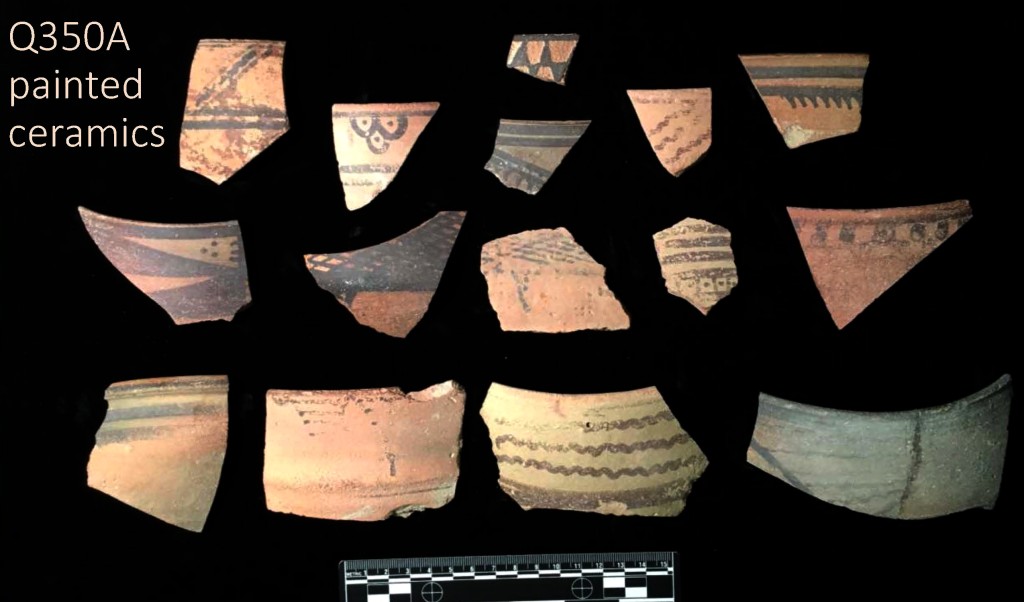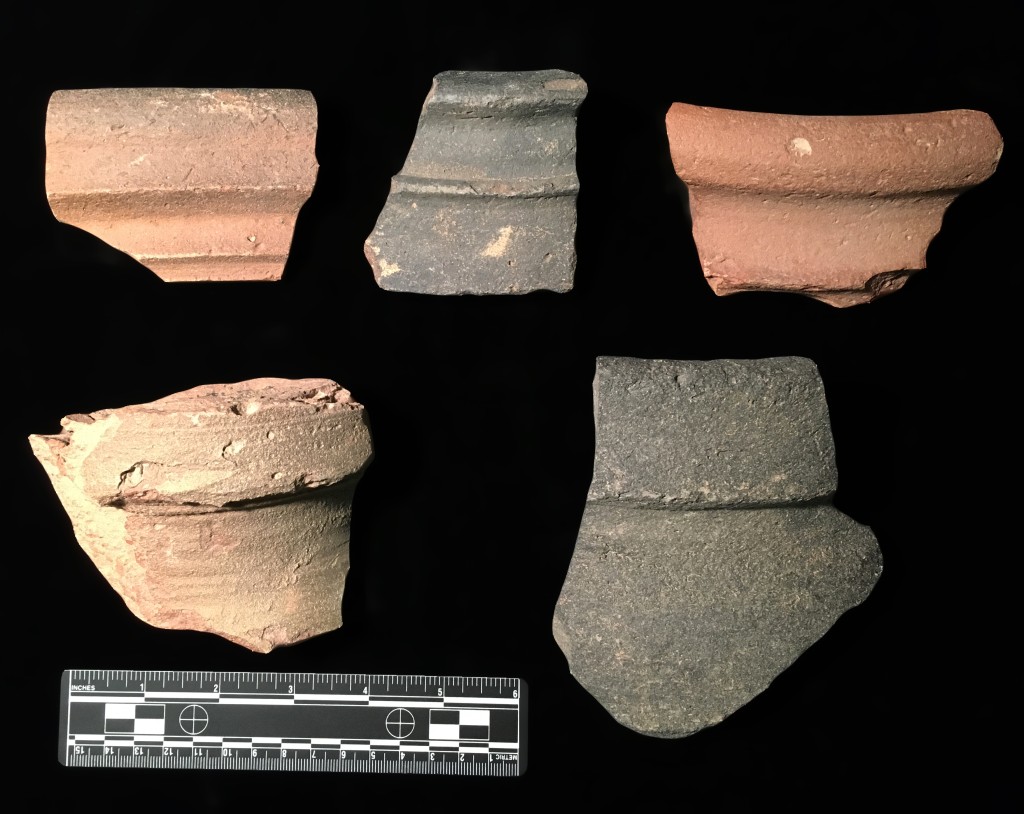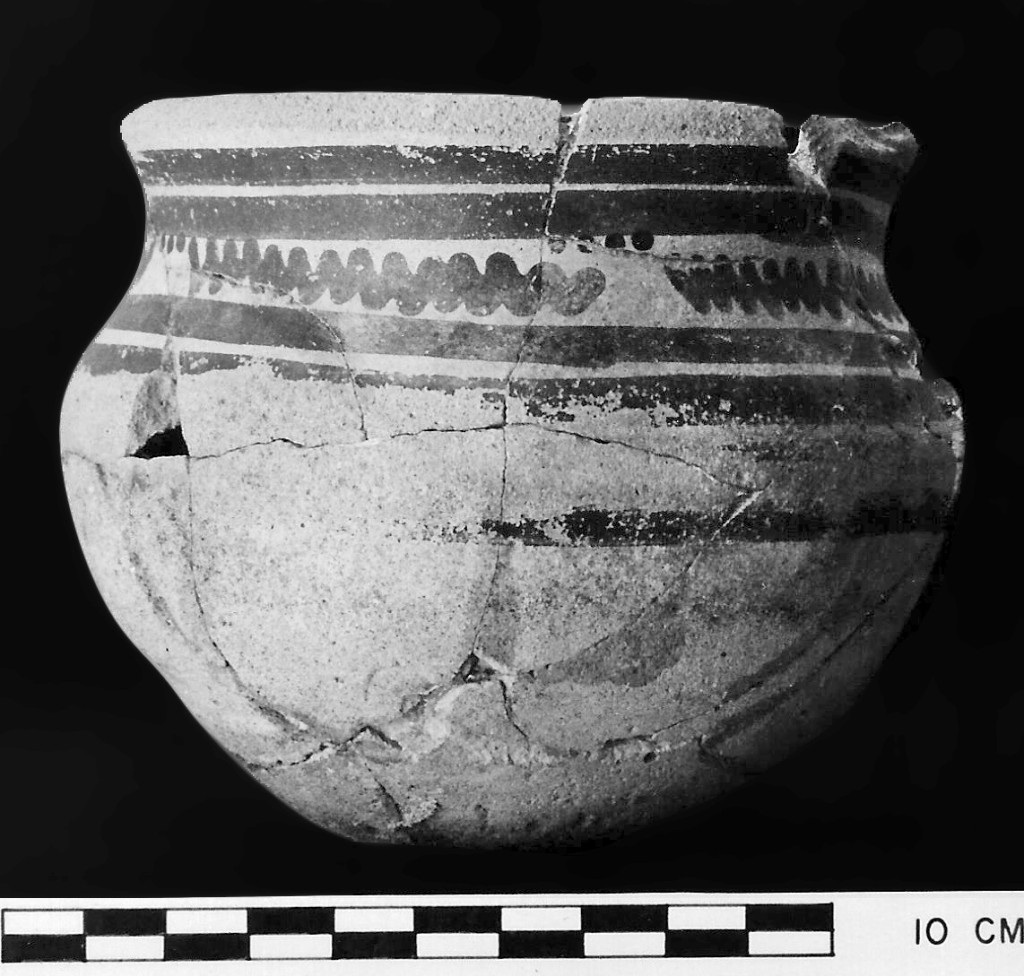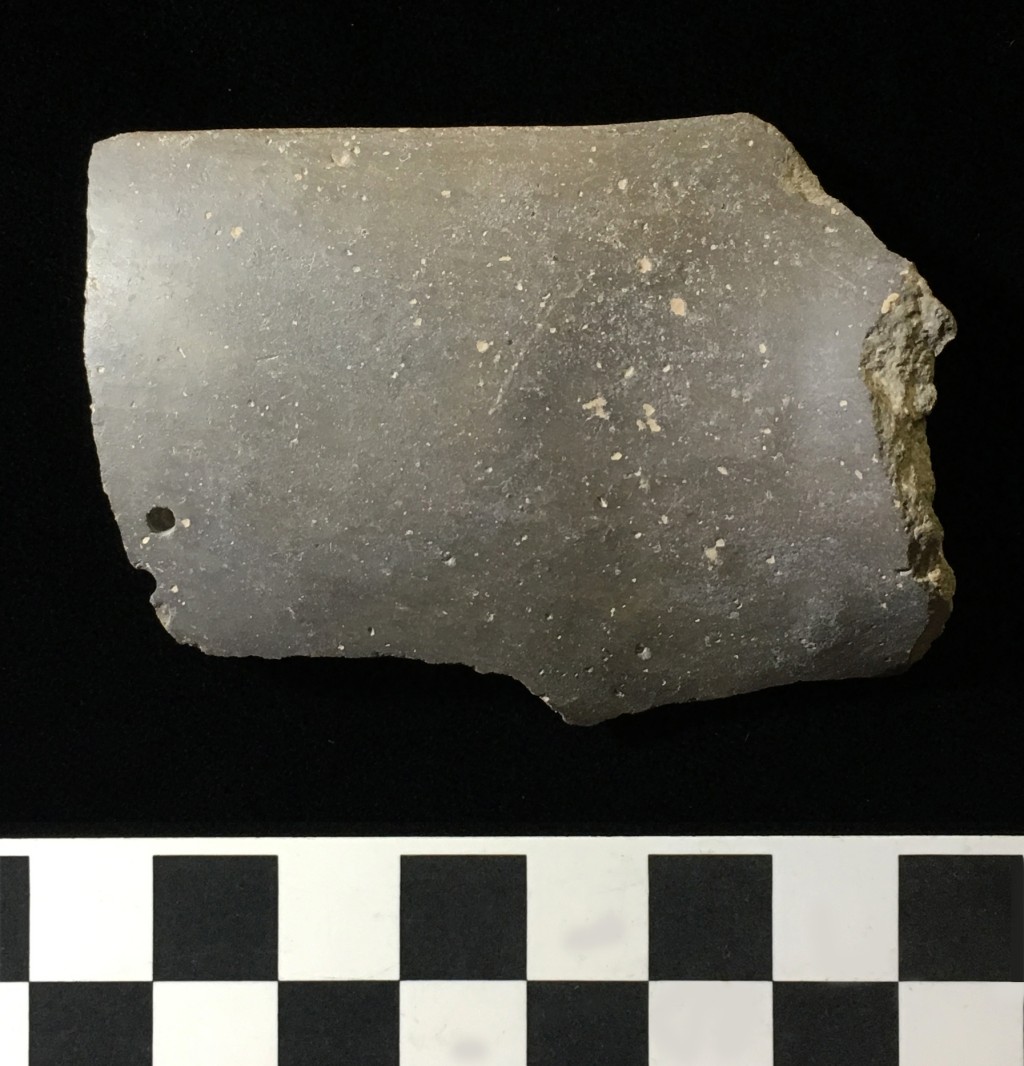Early Iron Age
One of the most significant finds by the Helmand Sistan Project was a previously unknown culture dating to about 1000 BCE, the Early Iron Age in Central Asia, a time period in which previous researchers thought the region was abandoned. We identified this culture through a unique ceramic style unknown anywhere outside Afghan Sistan. A key feature of this style is a type of small juglet made of very fine clay and fired in a kiln to a dark red, gray, or black and often covered with a light-colored slip on the exterior. Painted on these jugs in brown or black paint are various geometric designs bordered by tight bands around the shoulder. The designs range from cross hatching to zigzags to dotted circles. These pots are made with string-cut flat bases and are often shaved above the base. We found two of these painted vessels associated with burials at one site but are not certain if all of the painted ware was mortuary in nature. Other types of Early Iron Age pottery include larger jars and basins with thick ridges molded on the exterior. A pair of potsherds of fine polished grayware, a style well-known from this time in Iran but not otherwise found in our collections, helps to confirm the date we have assigned to this ceramic style.






